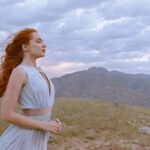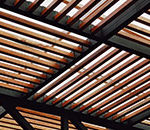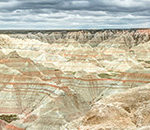When presented with an ethereal sunset or sunrise we tend to get lost in the myriad of camera settings and options. By the time we figure out what settings to use, the opportunity to capture the moment may have already passed. But if you’re clever enough to capture several exposures using the Auto Exposure Bracketing feature, blending them is another challenge. Jimmy McIntyre shares this amazing workflow that transforms your bracketed images into something that’s nothing short of pure bliss. And the best part is that it only takes about ten minutes for this transformation to happen:
McIntyre uses a set of three bracketed images. One is slightly overexposed, one is slightly underexposed, and one is at a middle exposure. McIntyre refers the overexposed image as the “base exposure” and the underexposed frame as the darker exposure.
Please note that the exact steps highlighted here may or may not apply to your images. These steps are specific to the set of exposures that McIntyre had in order to start off.
First, he brought down the highlights in the darker exposure to ensure a bit more detail in the clouds. He raised the exposure in the base exposure, just to bring out details in the foreground which are dark compared to the sky. And, he left the middle exposure alone.
Next, he selected all the images and did the basic adjustments of removing Chromatic Aberrations and Lens Profile Corrections. Then he held the shift button and opened the images in Photoshop as Smart Objects.
Stacking these images in Photoshop was the next step. You can do this using Raya Pro or manually drag one of the exposures onto the other to stack.
The next step was to blend the exposures together. Again, RayaPro is McIntyre’s preferred tool. If you don’t own a copy of this software, you can use a number of other alternative methods.
To manually blend the exposures, you can use the Apply Image option in Photoshop. Simply make the dark exposure invisible, apply a mask, and select ‘Apply Image’ under ‘Image’. Bring down the opacity of the blended dark exposure so that the final result looks natural.
McIntyre next added a bit of mood to the image by manually changing the white balance and tint of the brighter layers.
To do this, simply double-click on the thumbnails of each of the brighter layers. That should bring up Adobe Camera RAW. You can then adjust the White Balance and Tint of these layers to suit your needs.
You can also do the same to add a bit of clarity to the individual exposures. This time work with the Clarity slider instead of the Temperature to add a bit of contrast to the sky.
After some final micro adjustments, he had the image he was after.
Pretty amazing isn’t it?
Like This Article?
Don't Miss The Next One!
Join over 100,000 photographers of all experience levels who receive our free photography tips and articles to stay current:










I’m not sure how old this article is but isn’t this just HDR?